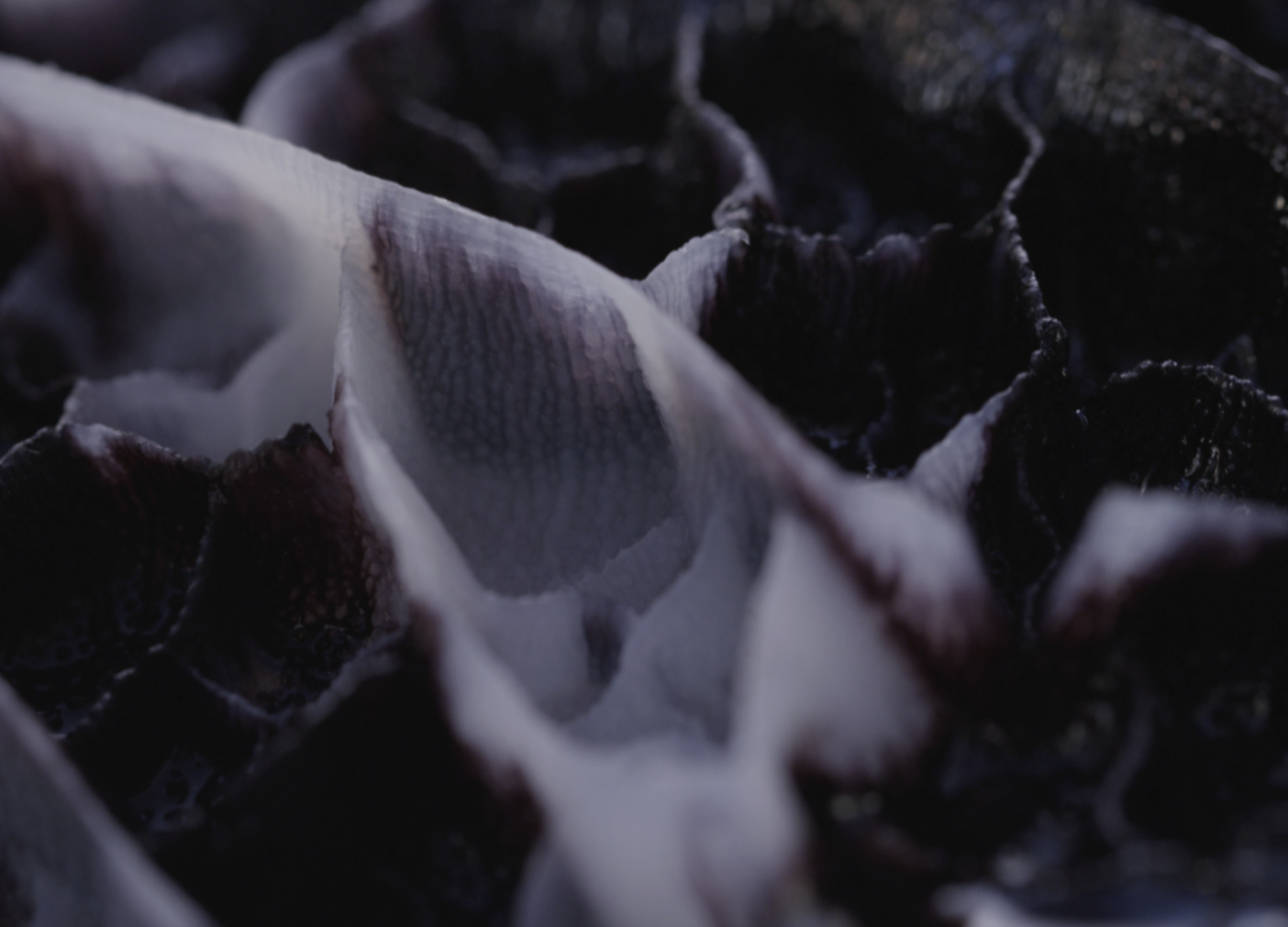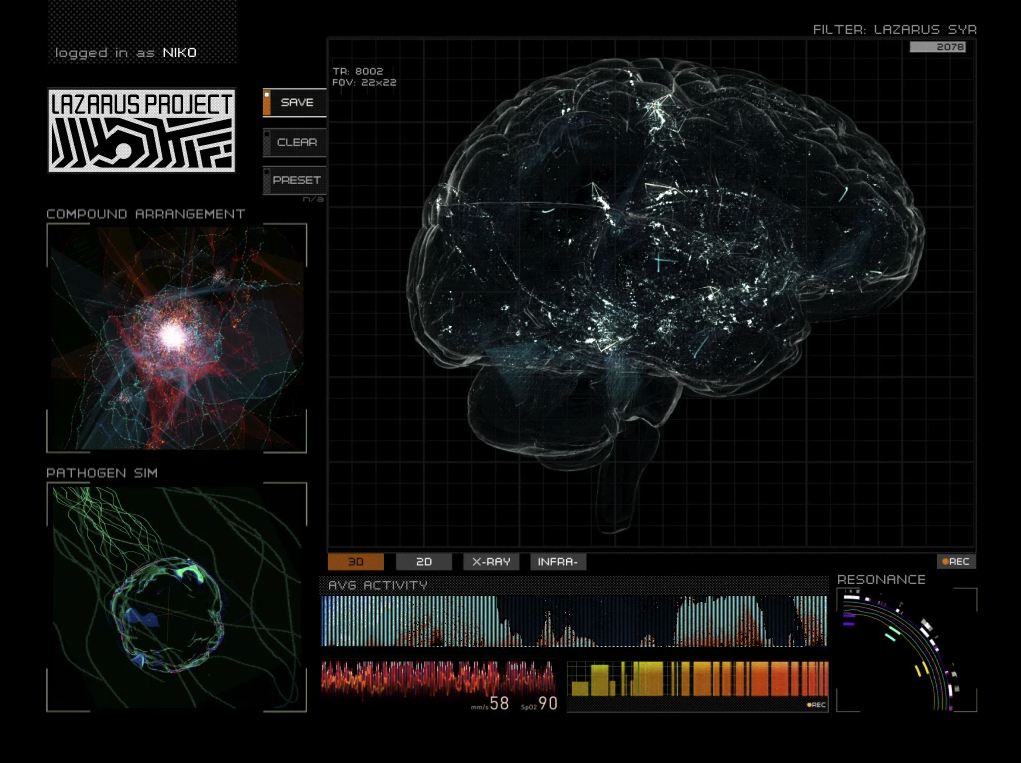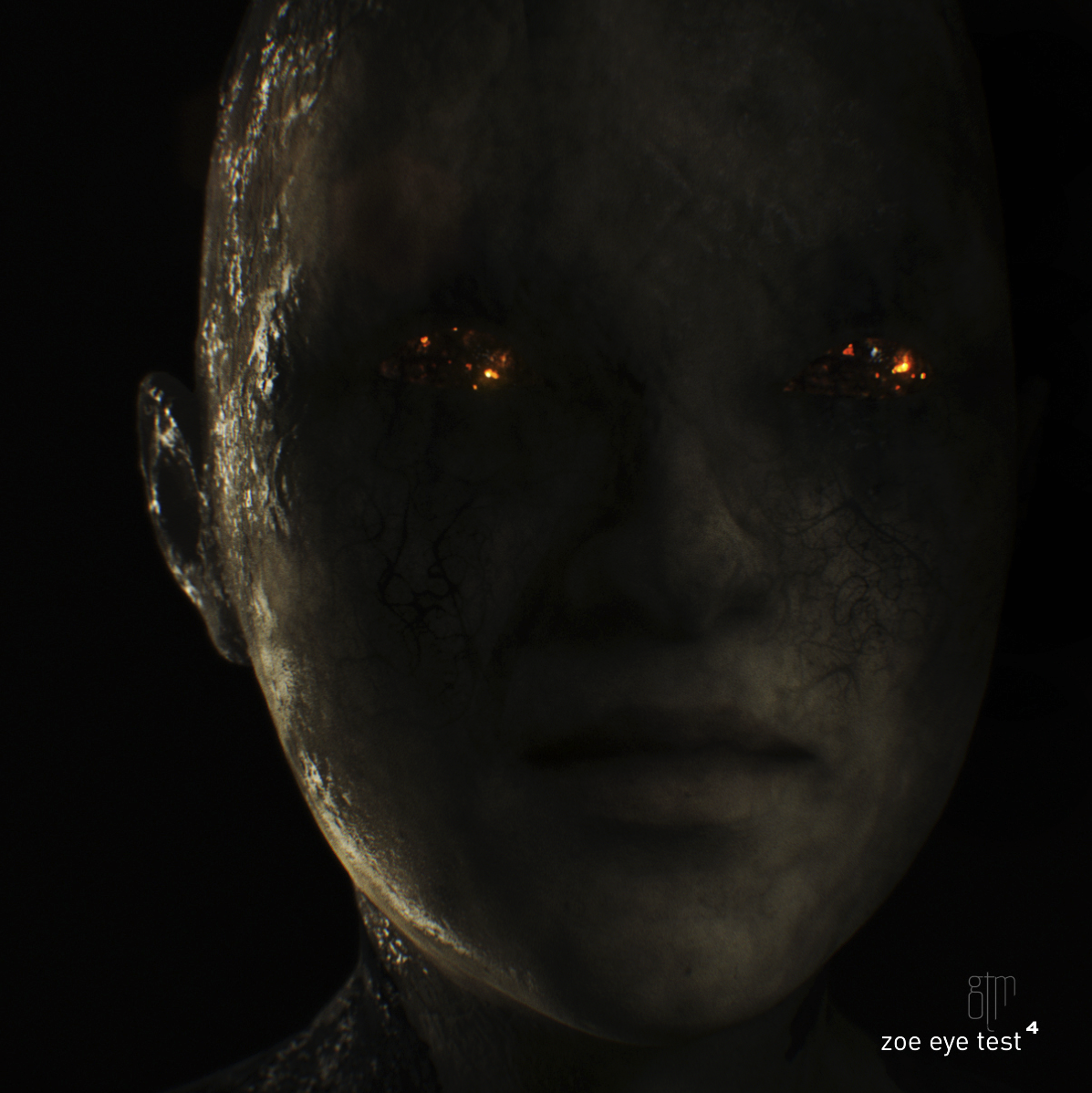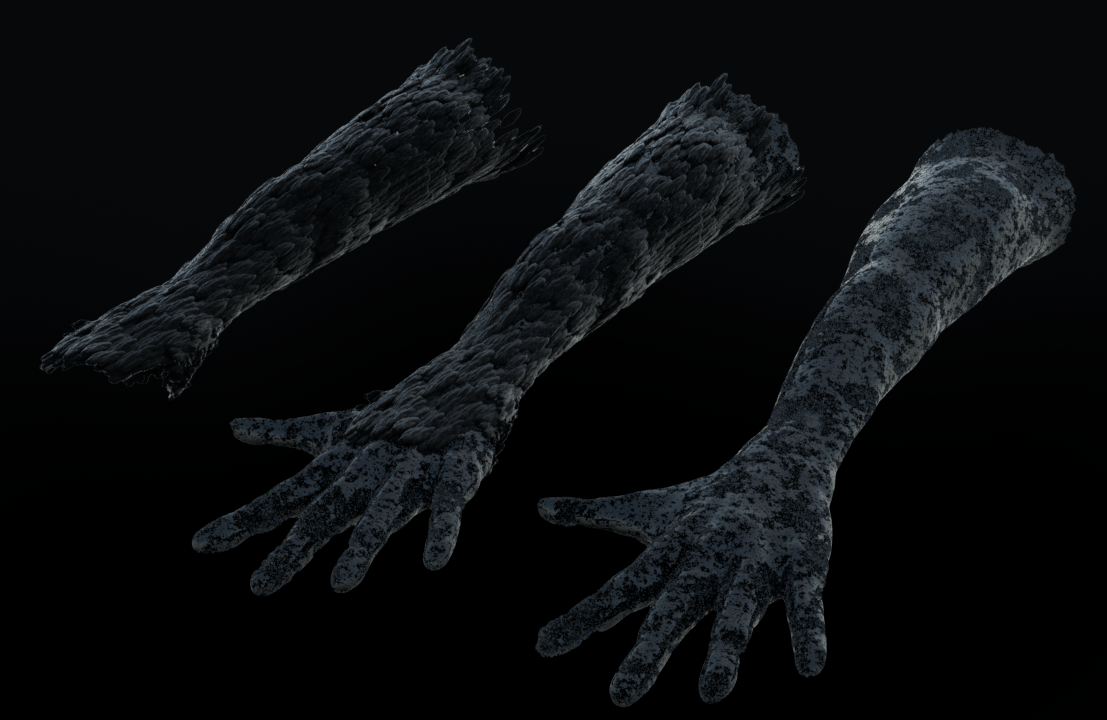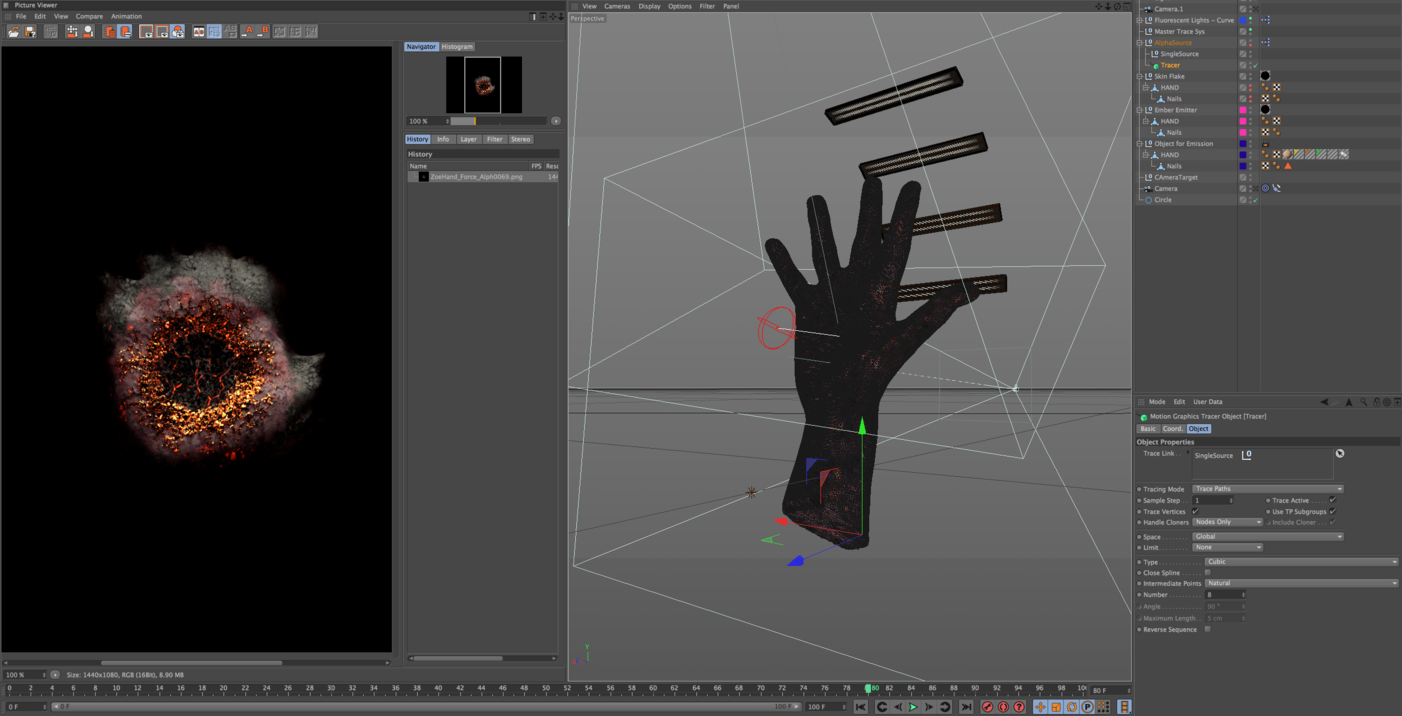THE LAZARUS EFFECT
Opening Titles
Creative Direction, Production, Design, 3D Model/Texture/Render, Composite
We knew we wanted to be heavily involved with the opening title sequence for The Lazarus Effect very early on in the project. We worked director David Gelb to cultivate a look and feel that would introduce audiences to the sci-fi/horror nature of the film by organically mixing the two genres.
We stockpiled a collection of materials that would be at home in both worlds, including ferrofluid, steel wool, magnets, blow torches, heat guns, and various types of meat to simulate what could be construed as a mad scientist's dream experiment.
VISUAL EFFECTS AND CGI
The biggest build of the film required a burning Zoe (Olivia Wilde) to float down a hallway of fire. By far one of the most challenging scenes, it involved adding CG fire to the walls of the hallway as well as adding burning and flaking skin peeling away from Zoe's face.
The execution required required us to create a 3D digital double of Olivia that was used as an emission and collision element for smoke, ember, and skin particles.
One shot in the hallway scene where we see Zoe (Olivia Wilde) floating with her feet barely off the ground unfortunately didn't make it into the theatrical release, but here's how we did it anyway!
We decided it would be more cost and time efficient to create this shot in CG, so we scanned Olivia's feet on set in full makeup with our 3D scanner. We then imported these scans into C4D, retextured and animated them to move realistically, and composited them over a plate that was shot on set. We then added glowing ember particles, flaking skin, and shadows to finalize the shot.
User Interface and Screen Interface Design
Given the film setting of a high tech, yet contemporary medical lab, we needed to create a host of computer screens that would feel clean and modern without looking too futuristic. To do this, we looked to Processing's controlP5 as inspiration.
The above video is a compilation of what we created. It may not be 100% scientifically accurate, but then again story telling isn't always scientifically accurate.
R&D / Initial Concept Phase
We knew this project would involve a lot of burning skin elements, so we created a pipeline that would help automate and speed up that process.
We created a dynamic shader system that affects the surface of the 3D model as an artist manipulates a null object in C4D. This automatically "burns" the skin in varying intensity responding to artist input using localized particle emissions.

